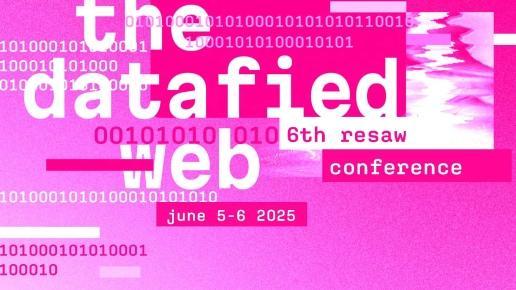The Datafied Web - RESAW Conference 2025
With over 40 presentations, the upcoming RESAW Conference 2025 is dedicated to "The datafied Web". The focus will be on early web development and the roots of data-driven web tracking. More than 70 researchers from 11 countries will come together on June 5 & 6 at the Collaborative Research Centre 1187 "Media of Cooperation" at the University of Siegen and create a diverse conference program.

RESAW is the acronym for A Research Infrastructure for the Study of Archived Web Materials. The RESAW community is dedicated to working with digital cultural heritage and meets every two years at the RESAW conference of the same name. RESAW was founded in 2012 with the aim of establishing a collaborative European research infrastructure for the study of and with web materials and to promote the European exchange of knowledge.
Web content is an ephemeral object: They are short-lived, context-bound or occasion-specific. The average lifespan of a website is just two months. This poses immense challenges for the research and archiving of web-based information and objects.
The sixth RESAW conference is dedicated to the search for the historical roots of the data-driven paradigm in web development. Trends, lines of development and genealogies of a datafied and metrized web as well as the emergence of platform-driven ecosystems will be analyzed in more detail. An examination of the historical context, aesthetics and role of web counters, analytics tools, mobile sensing and other metrics can help to gain a deeper understanding of online interactions, past publics and audiences and their (sometimes problematic) developments.
The topic "The datafied web" also raises questions about methods and (web) archives that make it possible to research this development: For example, what are the challenges and methodologies for archiving the metricized and increasingly mobile web, including the back-end infrastructure? Furthermore, the topic invites us to trace the historical development of data collection and the evolution of data monitoring practices on the web. Complementing this, questions on the historical development of tracking mechanisms, cookies and the emergence of digital footprints are relevant, as well as the evolution of companies that rely on metrics and the development of financialized web spaces and their implications.
The conference looks at medialized environments from the perspective of historical web analysis and asks the question: How has the datafied web created the sensory media environments in which we live today?
